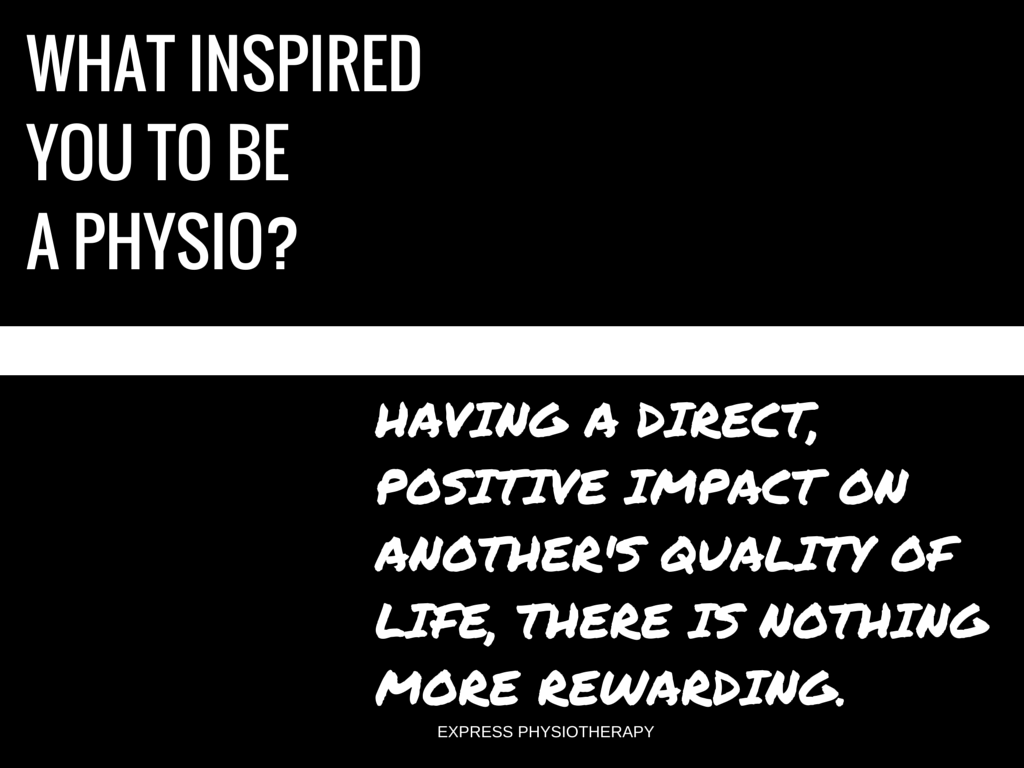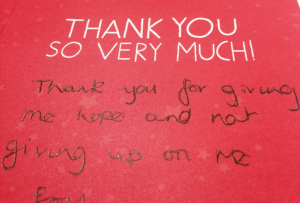“I grew up fascinated by hospitals and all things medical. I was a quiet myopic child who preferred reading and had insatiable curiosity.
My best friend at primary school had an older sister who had been ‘knocked down’ age 7 and consequently was a wheelchair dependent hemiplegic who I helped feed jelly to.
My parents were teachers in mainstream then special needs education – and had an ex pupil who was severely injured when he fell 100 foot off scaffolding at work. During his recovery my dad would bring him to our house.
I still remember my dad carrying him from the car into the house. He was an inspiration as he later became a professional dancer! My mum became the manager of one of the first PH daycare centres in the 70’s – I physically stopped growing at at 12 being 5ft 7 and strong and in the absence of hoists, over the years learned to stand transfer any size and disability of client.
At age 15 and knowing I wanted to do an active job in something medical, a community Physio who was visiting clients at the PH day centre took me with her for a few days to Burnley General hospital.
I never looked back. I have the best job in the world and would never change it. I’ve worked internationally and around the Uk in the NHS (16 years) and privately and I’ve never stopped learning skills to put in my ‘toolbox’ to enable make me the most effective and efficient I now can be. I’m all about enablement and independence. I will always be a physiotherapist first. Lucky lucky me.”
Following this we have Alan J.Taylor MSc MCSP HCPC Reg PGCHE who is an Assistant Professor/Module Convenor in the Division of Physiotherapy & Rehabilitation Sciences in the University of Nottingham. I think it is clear Alan is a very talented man from his piece. Alan also has a blog that can be found here.
A bicycle ride into physiotherapy and beyond … (Alan J Taylor)
A few years ago (!), aged about 14 years of age, I took off on a long, long bicycle ride over the hills of Derbyshire … the ride took me up the infamously steep Winnat’s Pass and many other painful climbs. I’d done a bit of preparation, but that ride made my legs hurt more than any other. I remember wondering about the mechanisms that led to that deep ache inside my legs, and instinctively gave them a rub or massage, as best as I knew how. Of course, you know what happened. Almost miraculously, they began to feel immediately better, looser, more supple … the pain had seemed to drain away. Frankly I was flabbergasted, how could that simple ‘leg rub’ make my aching muscles feel fresh and new again and ready for another pounding in Derbyshire?
I set out to find myself a regular ‘masseur’ who was also a coach, and used massage (to good effect) as part of my preparation from that day on. The experience had stimulated an on going interest in the complex physiology and psychology of the human body. I decided to explore ways in which I could be a part of that, and soon came across the profession of Physiotherapy … A confused teenager had found his metier, almost by accident. I’d discovered a profession (and physical modality) that would blend my love of sport, cycling in particular, and would feed my fascination with the human body and mind for a lifetime.
As a cyclist, I became moderately successful. I learnt how to suffer (I can safely say, I ‘know pain’) and I learnt how to win. I won many exciting races during a long career as an amateur cyclist and spent three years as a professional, completing the Professional ‘Kellogg’s Tour of Britain’ in 1988.
My physiotherapy training took place at the ‘Nottingham School of Physiotherapy’, and after qualification, I had the pleasure of working in a variety of countries and different settings. I had the experience of working for a Pro-cycling team, and on many top ranked events from triathlon to tennis. My journey took me all around the World and back again.
I still ride my bike for enjoyment, and regularly commute the 12 miles each way to my work at the University of Nottingham, School of Health Sciences. That is where I try to pass on my on going passion and enthusiasm for EBP and physiotherapy, to both undergraduate and post graduate students. I keep up a small amount of clinical work and devote my energy into physiotherapy education … Striving to keep up to date with the ever changing World of evidence based medicine, and it’s application to our profession.
Each day I remind myself as an educator, that we must “prepare our students for their future, not our past” … and that means keeping abreast of a dynamic landscape and embracing change.
As a physiotherapist I like to think I’ve helped a lot of patients and no doubt … hindered a few too, but I’ve never stopped learning. I am lucky enough to travel the World as a lecturer on various topics within Physiotherapy, and collaborate with some amazing and knowledgeable people, on peer-reviewed publications and other projects. I developed and maintain a passion for writing, which was sparked by my MSc in Sports Med, where I finally learnt to think. I do my utmost to pass that skill on to EVERY student (and clinician) I meet. I also write as music ‘critic’ and can occasionally be found strumming a guitar or banjolele myself.
My all time favourite quote comes from the legendary singer, musician, philosopher and poet Leonard Cohen …
“There is a crack in everything … that’s where the light gets in”.
The way I personally use that immortal line, is to remind myself (and others) that no one, and nothing is 100% ‘right’, and that blind, unquestioning followers of any teacher, guru, god, school of thought or otherwise are not really thinking critically
So never allow yourself to be lead along by the nose. My advice is to develop the art of healthy critique and THINKING … that way, ‘new paths are made’.
Incidentally, most folk would say that my pain relief from the massage was ‘psychological’, I would (still) say, with a smile on my face, ‘au contraire’ … sometimes we have to agree to disagree … enjoy the journey ☺
You can read some of Alans peer-reviewed papers here and here …
Again thank you to all who participated.



















